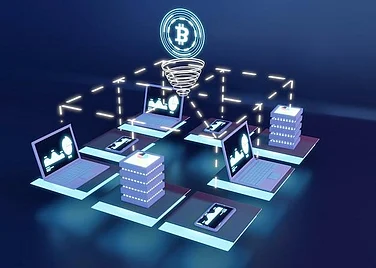Among the most promising recent evolutions in blockchain technology has been the rise of asset tokenization: the process by which real-world assets, from real estate, bonds, and art to equities, become converted into digital tokens. Tokenization is changing modern finance by reimagining ownership, value, and transactions while it creates a bridge between traditional assets and decentralized networks.
However, with tokenization platforms multiplying on different blockchains, one consistent problem is interoperability. Even though blockchain design has significantly advanced, the inability of the different tokenization systems to communicate well, transact, and transfer assets across them is a major barrier. This lack of interoperability leads to a restriction of liquidity, increase in costs, and a gradual pace in the adoption of tokenized and assets globally.
This article explores why interoperability continues to be a challenge across tokenization platforms, the technical and regulatory factors behind it, and how the crypto industry can move toward more connected ecosystems.
Understanding Interoperability in Tokenization
Interoperability simply means that different blockchain systems can communicate and interact without friction. This implies that, in tokenization, tokens are created on one platform and can be transferred, traded, or recognized by another, just as you can send an email across different providers such as Gmail or Outlook.
Unlike emails, most blockchains and tokenization platforms are designed as stand-alone architectures. Each has its unique set of token standards, smart contract designs, and consensus rules. So, transferring a token from one network to another isn't that simple - it usually requires third-party bridges or complex conversion mechanisms, adding risk and inefficiency.
Interoperability is important for many reasons, including:
It allows for seamless transfers of tokenized assets across chains and markets.
It develops larger liquidity with the interconnection of fragmented systems.
It enables various investors and institutions to use the same asset on several dApps and financial systems.
Without it, tokenized assets would be stuck inside their ecosystems, limiting the global vision of a connected token economy.
Why Is Interoperability Still a Problem?
Despite growing awareness, various technical, regulatory, and business hurdles stand in the way of making tokenization platforms interoperable.
1. Technological Fragmentation
Different blockchains are built on different technical stacks. Each has its own unique consensus mechanisms, such as Proof of Work versus Proof of Stake, conditions for finality, and token standards.
Ethereum: ERC-20, ERC-721 token standards
Binance Smart Chain follows BEP standards, and
Private permissioned blockchains usually possess their specific, customized token formats.
This means that tokens created on one platform are not automatically compatible with others. There are bridging solutions — which act as connectors between two blockchains — but they are complex and have been frequent targets for security breaches.
In tokenization, small differences in how smart contracts represent ownership, transfers, and metadata make cross-chain interoperability very difficult.
2. Lack of Common Standards
One of the main causes of interoperability issues is the lack of common standards for the creation of tokens and data exchange.
Each tokenization platform defines the attributes of these assets differently, be it ownership rights, yield distribution, or compliance logic. Without commonly agreed-upon industry standards, each system becomes a silo.
Thus, it's tough to make two tokenization solutions "speak the same language."
For example,
A bond token on one blockchain might represent interest payments through automated smart contracts.
Another might encode those rights off-chain through manual verification.
Consequently, systems cannot recognize or validate each other's tokens on their own.
3. Fragmented Business Models and Incentives
Many of those tokenization platforms are created by private entities that would want to keep control within their ecosystem. This creates a competitive situation, not one involving collaboration.
Platforms might not want to open access or share liquidity with competitors.
Proprietary systems can generate higher transaction fees and keep users within one network.
Such closed approaches hinder efforts to develop a common interoperable layer, since there’s little financial incentive for one platform to connect to another.
Ultimately, this fragments liquidity tokenized assets are tradable only in very limited ecosystems, rather than freely across the digital asset marketplace.
4. Regulatory and Legal Complexities
Interoperability is not just a technical issue; it's also a regulatory one.
Every jurisdiction defines ownership of assets, transfer rights, and investor protection in its own way. When tokenized assets cross borders or platforms, the legal frameworks are hard to reconcile.
For example, a tokenized real estate asset in Singapore could be legally recognized under local property laws but would need to comply with a completely different set of financial regulations when moved onto a European platform.
Moreover, custodians, clearers, and financial intermediaries need to ensure that legal rights associated with tokens off-chain are valid when transferred across systems-something today's fragmented platforms cannot support easily.
5. Security Risks in Cross-Chain Operations
Interoperability solutions commonly rely on bridges or intermediary protocols that connect two or more blockchains. Unfortunately, such bridges have become common targets of cyber-attacks. Billions of dollars in assets have been stolen in high-profile bridge exploits in 2022 and 2023 alone.
Every time a token crosses chains, several systems have to agree on the finality of transactions, data validation, and verification, wherein any weak point in this process leads to loss of funds or double-spending. Until universally secure interoperability protocols are developed, many institutions will remain cautious about connecting tokenization platforms.
Pros and Cons of Interoperability in Tokenization
Pros | Cons / Challenges |
Enables cross-chain liquidity and broader investor participation. | Complex to implement due to differences in blockchain design. |
Reduces friction between platforms and improves efficiency. | Security vulnerabilities through bridges or connectors. |
Increases asset utility across ecosystems. | Lack of standardization creates compatibility issues. |
Supports global trading and settlements. | Legal uncertainty in cross-border asset transfers. |
Steps Toward Better Interoperability
Despite the challenges, several initiatives and approaches are helping tokenization platforms move closer to interoperability.
1. Adoption of Common Standards
The creation of shared frameworks — like the ERC-3643 token standard for regulated assets — is helping align how tokenized assets are represented and transferred. Global bodies such as the International Token Standardization Association (ITSA) are working to unify definitions and practices.
2. Use of Interoperability Protocols
Projects like Chainlink CCIP, Polkadot, and Cosmos are developing cross-chain communication protocols that enable secure data and token transfers between blockchains. These interoperability layers can serve as bridges between isolated ecosystems.
3. Legal Harmonization and Compliance Frameworks
To enable regulated interoperability, legal and compliance standards must evolve. Cross-jurisdictional efforts like the European Union’s MiCA regulation and Project Guardian (led by MAS and financial institutions) are exploring how tokenized assets can operate across borders safely.
4. Institutional Collaboration
Traditional financial players, including custodians and asset managers, are now joining consortiums to define interoperable infrastructure. The more stakeholders agree on frameworks for settlement, custody, and compliance, the easier it becomes to build cross-platform compatibility.
5. Designing for Future Compatibility
New platforms are beginning to design with interoperability in mind — by using modular architecture, API-based integrations, and multi-chain token issuance capabilities. This reduces dependence on a single network and prepares the ecosystem for cross-chain operations.
Comparison: Isolated vs. Interoperable Tokenization
Aspect | Isolated Tokenization | Interoperable Tokenization |
Ecosystem Reach | Limited to one platform or blockchain. | Accessible across multiple chains and platforms. |
Liquidity | Fragmented and smaller investor pool. | Shared liquidity broader access. |
Complexity | Simpler setup fewer dependencies. | Technically complex requires integration. |
Risk Exposure | Lower due to fewer moving parts. | Higher due to cross-chain risks. |
Why Interoperability Matters
Without interoperability, the promise of asset tokenization remains only partially fulfilled. The entire goal of tokenization is to make assets more accessible, liquid, and tradable in a borderless financial system. But as long as each platform operates as an island, that vision remains fragmented.
Interoperable tokenization could unlock:
Global liquidity, where investors from any region can trade tokenized assets freely.
Institutional adoption, as standardized frameworks build trust.
Efficiency and cost reduction, through streamlined settlement and custody processes.
Innovation, as developers can build cross-chain applications that use tokenized assets seamlessly.
Conclusion
Interoperability remains one of the most critical and complex challenges in the tokenization ecosystem. The lack of uniform standards, fragmented blockchains, varying regulations, and competing business interests all contribute to a landscape where tokenized assets cannot move freely between systems.
To unlock the full value of tokenization, the industry must embrace collaborative development, standardized frameworks, and secure interoperability protocols. Only then can the vision of a connected, liquid, and efficient tokenized economy become a reality.
Ultimately, interoperability is the foundation that will determine whether tokenization evolves into a truly global financial infrastructure — or remains trapped within isolated digital islands.
Frequently Asked Questions (FAQs)
Q1: What does interoperability mean in the context of tokenization?
Interoperability allows tokens issued on one blockchain or tokenization platform to be recognized, transferred, or traded across other systems without needing conversions or manual reconciliation.
Q2: Why is interoperability important for tokenized assets?
It ensures liquidity, accessibility, and utility. Without interoperability, tokens remain stuck in isolated networks, limiting their ability to move between exchanges, wallets, and financial applications.
Q3: How can interoperability improve investor confidence?
When assets can be easily transferred and verified across systems, it increases transparency, reduces settlement times, and minimizes counterparty risk — all of which build trust among institutional and retail investors.
Q4: Are there any successful examples of interoperable tokenization?
Yes. Projects like Polkadot, Cosmos, and Avalanche Subnets are developing frameworks that enable multiple blockchains to share data and assets securely. Similarly, industry collaborations like Project Guardian are exploring interoperability for tokenized bonds and funds.
Q5: What needs to change for full interoperability to be achieved?
The industry must align on common standards, develop secure cross-chain infrastructure, and harmonize regulatory frameworks. It’s not just a technical challenge but also an organizational and legal one.
























